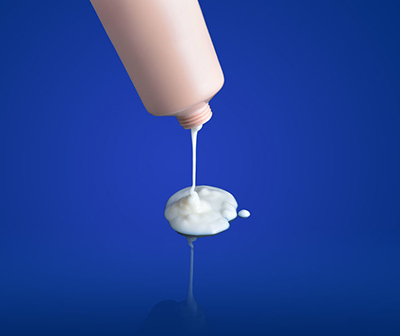 Humectants are important multifunctional ingredients found in most skin care formulations. They are defined as materials that can absorb or retain moisture. Humectants can provide numerous benefits such as moisturization, exfoliation, potentiation of preservation activity, solvency to help dissolve actives, modification of skin feel, and helping to improve freeze/thaw stability of oil in water emulsions.
Humectants are important multifunctional ingredients found in most skin care formulations. They are defined as materials that can absorb or retain moisture. Humectants can provide numerous benefits such as moisturization, exfoliation, potentiation of preservation activity, solvency to help dissolve actives, modification of skin feel, and helping to improve freeze/thaw stability of oil in water emulsions.
Moisturizing Humectants
- Glycerin is the main humectant used in most high-performance moisturizers and is considered the gold standard to which all moisturizing humectants are compared. Many of the top-performing hand and body lotions contain between 10-20% glycerin and clinical data demonstrating moisturizing efficacy has been published in numerous peer-reviewed journals. The key issue with using efficacious levels of glycerin is tacky skin feel, and normally, other humectants are used in combination to improve the feel.
- Hydroxyethyl Urea (HYDROVANCE® by Akzo Nobel Personal Care) Gels containing 5% Hydrovance have been shown to have similar moisturizing properties to glycerin with a significantly better skin feel than glycerin or Sodium PCA.
- Betaine (GENENCARE™ OSMS BA by DuPont) is an excellent, non-tacky moisturizer that also has been shown have skin lightening activity and reduce surfactant-induced skin irritation.
- Sodium PCA (AJIDEW® NL-50 by Ajinomoto) is a natural humectant found in human skin as a component of NMF (natural moisturizing factor). Dry skin has been shown to contain less PCA than normal skin. My recommendation is to use Sodium PCA with glycerin for better performance.
- Sodium-L-Lactate (PURASAL® S/HQ60 by Corbion Purac) is a natural humectant found in human skin as a component of NMF. Sodium Lactate has good moisturizing properties and can increase epidermal lipid synthesis. When formulated at a PH of 3-4, it can also promote cell exfoliation and increase cell turnover. Care must, however, be used when formulating facial products to avoid stinging problems.
- Propanediol (Zemea® by Tate and Lyle) Zemea® combined with glycerin (1:1) is claimed to have similar moisturizing activity as all glycerin, with a better skin feel
Antimicrobial Potentiating Humectants
- 1, 2 Pentylene Glycol (Hydrolite® 5 by Symrise) is a good solvent and moisturizer that can significantly reduce preservative usage when used at 2-3%. It also has a non-tacky skin feel.
- 1, 2 Hexanediol (Hydrolite® 6 by Symrise) can significantly reduce preservative usage when used at 1-2%. It is also an excellent solvent that can significantly reduce surfactant concentration when solubilizing fragrances or actives into water.
- SymDiol® 68 (1, 2-Hexanediol, Caprylyl Glycol by Symrise) has excellent antimicrobial potentiation properties when used at .5%. Used at .5% in a formulation, it has also been shown to be as effective as 3% glycerin in moisturizing skin.
Humectant Solvents
- 1, 2 Hexanediol (Hydrolite® 6 by Symrise) is an excellent solvent and one of the best I have evaluated
- PEG-4, 8
- Dipropylene Glycol
- 1, 2 Pentylene Glycol (Hydrolite® 5 by Symrise)
- Propanediol (Zemea® by Tate and Lyle)
- 1,3 Butylene Glycol
- 2-Methyl-1,3-Propanediol (MPDiol® by Lyondell)
- Propylene Glycol– Zemea® has replaced propylene glycol usage in most formulations.
Natural Based Humectants
- Glycerin
- Pentylene Glycol (MinaCare® Pentiol Green by Minasolve)
- 1,3 Butylene Glycol
- Propanediol (Zemea® by Tate and Lyle)
- Sodium PCA (AJIDEW® NL-50 by Ajinomoto)
- Sodium-L-Lactate (PURASAL® S/HQ60 by Corbion Purac)
- Betaine (GENENCARE™ OSMS BA by DuPont)
The views, opinions and technical analyses presented here are those of the author or advertiser, and are not necessarily those of ULProspector.com or UL Solutions. The appearance of this content in the UL Prospector Knowledge Center does not constitute an endorsement by UL Solutions or its affiliates.
All content is subject to copyright and may not be reproduced without prior authorization from UL Solutions or the content author.
The content has been made available for informational and educational purposes only. While the editors of this site may verify the accuracy of its content from time to time, we assume no responsibility for errors made by the author, editorial staff or any other contributor.
UL Solutions does not make any representations or warranties with respect to the accuracy, applicability, fitness or completeness of the content. UL Solutions does not warrant the performance, effectiveness or applicability of sites listed or linked to in any content.



Leave a Reply or Comment